Theresa May on decision-making, Brexit and doing the job her way
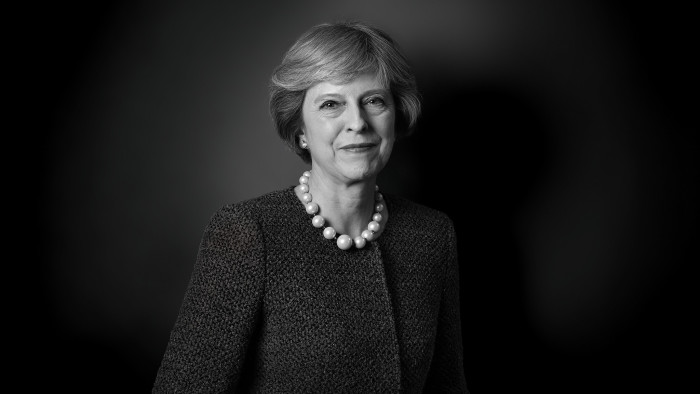
Simply sign up to the Life & Arts myFT Digest -- delivered directly to your inbox.
The word “queen” attaches itself easily to Theresa May. Remote, admired, feared, the woman who took over a country gripped by the fallout from Brexit smiles politely in her Number 10 study when reminded that she once named Elizabeth I as the historical figure with whom she most identified.
“She stood up for Britain,” says the country’s second female prime minister, charged with navigating the perilous path out of the EU. Theresa May likes to be in control: she is wondering where the Elizabeth analogy is going. “I’m not sure it was consciously about her being a female leader,” she says quickly. “I think it was just about somebody who had a very clear vision about what she wanted to do.”
In her almost five months as prime minister, May has been accused of acting like a Tudor monarch, trying to use royal prerogative powers to start Brexit without consulting parliament. And there is indeed something imperious about her, as she sits sipping tea, contemplating a nation at “a turning point” in its history.
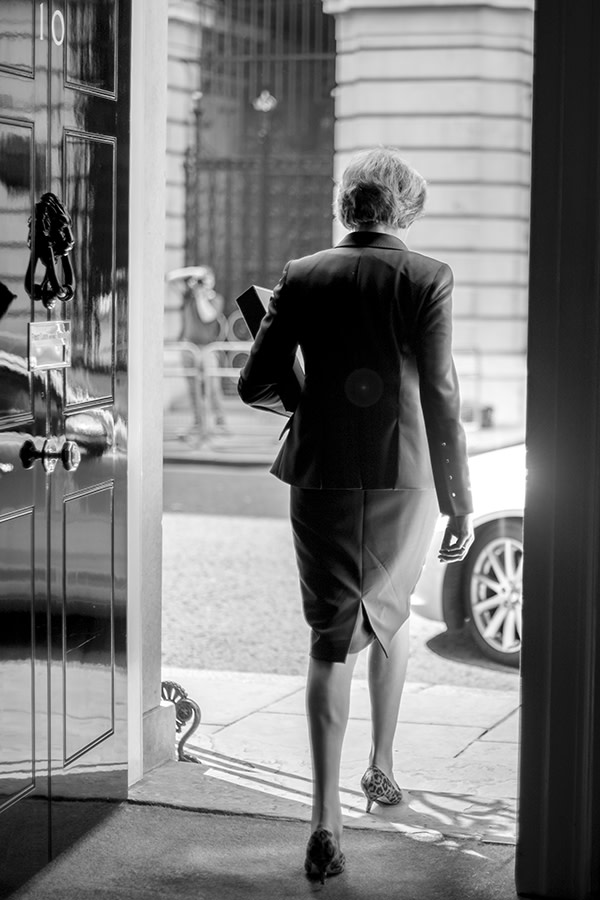
Her brisk style has won wide public support and calmed markets after the Brexit vote; her party admires her, even if it does not love her. She can be brutal. To her former cabinet colleague Nick Clegg, she is the “ice queen”; to the Daily Mail she is “the queen of power dressing”; to Fraser Nelson, editor of The Spectator magazine, she is a “killer queen”, dispensing victor’s justice after succeeding Cameron.
Like Elizabeth, Theresa May has to deal with problems in Europe and upheaval at home. She even faces unruly Scots. And there is something of the revenge tragedy about the way she has sacked and humiliated former enemies such as George Osborne. Her court includes ruthless political enforcers, including chief whip Gavin Williamson, who keeps a tarantula called Cronus in his office, named after the mythical Greek figure who castrated his father and threw his testicles into the sea.
But the prime minister fears the Tudor comparisons are getting out of hand when it is suggested that Liam Fox, her Brexiter trade minister, might be the 21st-century equivalent of the swashbuckling Sir Francis Drake. “Think about the tights!” she gasps.
It is a mischievous side to the prime minister rarely seen by the public, or indeed by many Tory MPs. “She can be bloody good fun,” insists one ally. For most of those outside May’s tiny circle of close friends, it is hard to see beyond the poised façade of the woman in her study, immaculate in cream jacket and a pearl and black-beaded necklace.
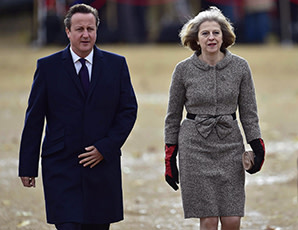
Where David Cameron entertained guests in this room with banter, mugs of coffee and sofas, May’s style of leadership is reflected in her decision to swap soft furnishings for a glass-topped table. “I think everybody has their own style as to how they do business,” she says. “I think it helps to have a table and it does add a degree of formality.”
Born Theresa Mary Brasier in 1956 and raised in Oxfordshire, the daughter of a vicar was always serious. “I don’t have any grandiose thoughts about it. I just get on and do the job,” she says. You get a sense of that the moment you enter Downing Street. All the pictures from the Cameron era have been removed from the waiting room; the only thing hanging on the walls is a verbatim account of the words she uttered on July 13 outside Number 10.
In that speech May promised to learn the wider lessons of Brexit, acknowledging that the vote to leave the EU was also a rejection of globalisation and a broken economy and society. She promised to stand up for the poor, the white working class, black people, the young, women and the 93 per cent of people who attend state schools and struggle to reach the top professions.
Out went Cameron’s comfy chairs and his clique of expensively educated ministers and advisers. May sacked former leadership rivals Osborne and Michael Gove and put Boris Johnson on a tight leash as foreign secretary. At a political awards ceremony May joked that, like the owner of a badly behaved dog, she might put Johnson down when “he wasn’t needed any more”.
Was her cabinet reshuffle all about payback, revenge for the way in which economic liberals like Osborne clashed with her during her six years as home secretary, as she tried and failed to control immigration? “No,” she says simply. “What was important in forming the team was unity. Whatever side anybody was on in the referendum vote, we’ve all now got to come together and deliver for the public.”
Women of the year
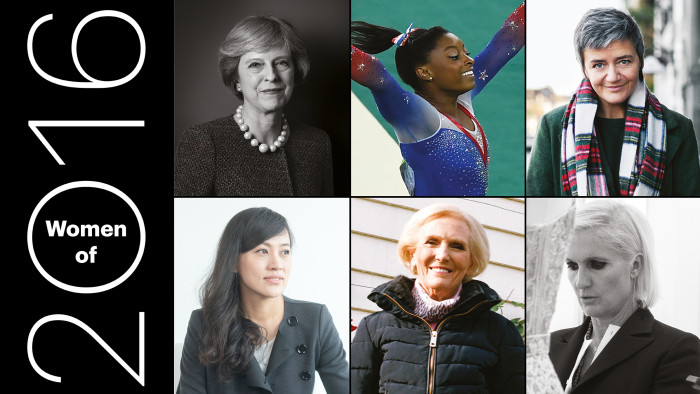
FT women of 2016: who we chose and why
Simone Biles, gymnast
Jean Liu, businesswoman
Maria Grazia Chiuri, head of Christian Dior
Margrethe Vestager, EU competition commissioner
Njideka Akunyili Crosby, artist
Dilma Rousseff, former Brazilian president
Phoebe Waller-Bridge & Vicky Jones, creators of ‘Fleabag’
Mary Berry, queen of baking
Some argue that May’s style of government is too controlling and centralised to be able to deliver her agenda of social and economic reform, let alone Brexit, and that she must learn to share the load.
Ministers and civil servants were warned last week by May that they faced the sack if they leaked information to journalists. Sir Jeremy Heywood, her top official, told civil servants that May “expects to see rapid and visible improvement”, and that “security teams” would check emails and phone records for evidence of leaks (a threat that did not stop Heywood’s memo from being leaked).
Ministers and officials fear the call from her praetorian guard. It is suggested that her elaborately bearded joint chief of staff Nick Timothy might be akin to Elizabeth I’s spymaster Sir Thomas Walsingham. “Francis Walsingham,” she corrects quickly.
May wants to hold information and power tight. “She gives her confidence to people very, very sparingly,” says one former colleague. The criticism runs that while May might seek opinions from ministers and officials at an early stage, ultimately decisions are taken by her and her inner court. The circle of trust includes many of those she worked with at the Home Office, including the ministers Damian Green, Karen Bradley and James Brokenshire, plus Timothy and Fiona Hill. “Those two build a wall around her,” says a former Home Office colleague.
“OK, I’ve got a team around me, some of them people I’ve worked with before, some of them I’ve not worked with before,” May says. “What I’ve done is reinstated cabinet subcommittees. There’s a much more open and free discussion among cabinet colleagues on different policy issues.” Ministers agree that May does allow proper discussion early in the decision-making process but even her supporters admit she has yet to learn to delegate.
Catherine Meyer, a friend of the prime minister, describes her as “hard-working but not a workaholic. She’s a details person but she’ll have to let go a bit.” Meyer, wife of the former British ambassador to Washington Sir Christopher Meyer, adds that May’s husband Philip (a client relationship manager at Capital Group) will play a key role: “He is someone who will say, ‘You need a rest, we need to have a walk in the mountains.’”
May insists: “I don’t take all the decisions. Everybody thinks that suddenly everything is coming to me as prime minister. But there are some crucial decisions that obviously I take.” The biggest so far was the one to approve, with some strings attached on future foreign investment, the Hinkley Point nuclear power station, being built with French and Chinese money.
Apart from her controversial proposal to reinstate selective grammar schools, May’s judgments on issues ranging from tackling corporate greed to infrastructure investment have all been marked by caution, exposing her to accusations that her deeds do not measure up to the scale of the challenges identified on the wall of the Number 10 waiting room.
But the defining decision of her premiership will be exactly how to pursue Brexit. May, who often works through big issues late into the night, gives few clues to cabinet colleagues on whether she will pursue a “clean break” with the EU or try to achieve a so-called soft Brexit with closer economic ties. Her cautious instincts point to her seeking a “grey Brexit” — somewhere in between. “She is particularly Sphinx-like in those meetings,” says one minister.
May, elected to parliament in 1997 as one of only 13 female Conservative MPs, has no time for this criticism of her style. “It’s not a question of whether people have earned trust,” she says. “It’s a question of where it’s appropriate for different decisions to be taken.” On Brexit, she is clearly in charge and has said she will trigger the Article 50 exit clause by the end of next March, when talks about Britain’s departure will begin in earnest.
“It’s important that we don’t leave it for too long, otherwise people will lose faith in their politicians, they’ll think that we’re trying to pull the wool over their eyes.” While keeping an eye on the home front, where Tory Eurosceptics are keen to get on with Brexit, she is thinking ahead to Brussels and next year’s EU exit talks.
“What I’ve been saying to people is I want to see as smooth and orderly a process as possible,” she says. May supported Remain but was almost invisible in the campaign, to Cameron’s fury. “Of course, it’s going to be complex because there’s a lot to deal with,” she says. “You’re not a member of something for 40-odd years and then it’s easy.”
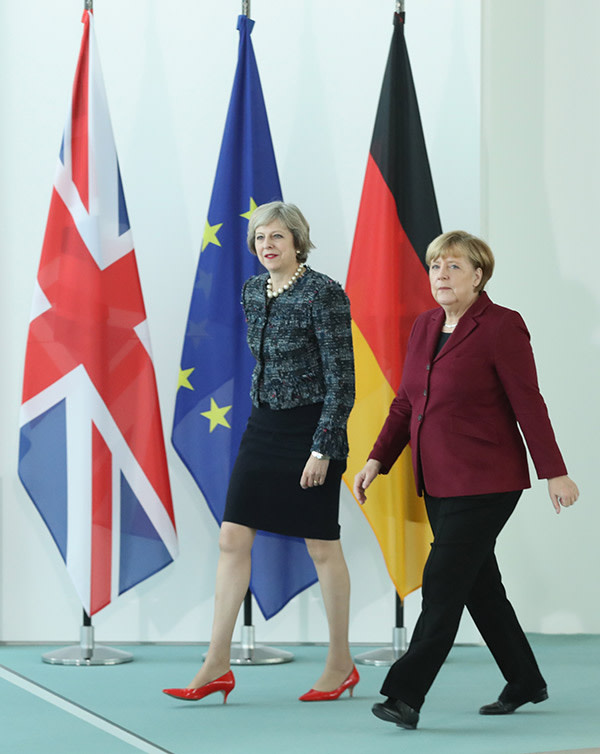
She accepts that the remaining 27 EU countries have their own agenda, hinting that Britain may not — in the words of Johnson — expect to “have its cake and eat it”. She says: “They don’t want to see others looking to break away and to vote to leave in the way the UK has done.” The atmosphere around the talks could be tense: “Things will be said,” she says. “I think it’s important for us to build up the relationship with the people we’re negotiating with.”
One relationship, in particular, will come under heavy scrutiny. May travelled to Berlin to meet Angela Merkel early in her premiership and the two discovered they have much in common. Merkel is just two years older than May, who turned 60 in October, and both are daughters of clergymen, have no-nonsense political styles and go walking in the Alps as their principal leisure pursuit.
But while Cameron put the Merkel relationship ahead of everything else — and was frequently left disappointed when she could not deliver for him — May is more circumspect: “I think it’s also important to build a relationship with others sitting around the European table. There are 27 member states which will be negotiating.”
For now May exerts an iron grip on her government and party. But her control is not based on an elaborate network of supporters or informers beyond her inner circle; it is rooted in her apparent competence and popularity in the country: her Tory government had a 16-point lead over the Labour opposition in a recent ICM survey, including a lead among working-class voters. Kate Bush, the singer, told the Canadian magazine Maclean’s: “It’s great to have a woman in charge of the country. She’s very sensible and that’s a good thing at this point in time.”
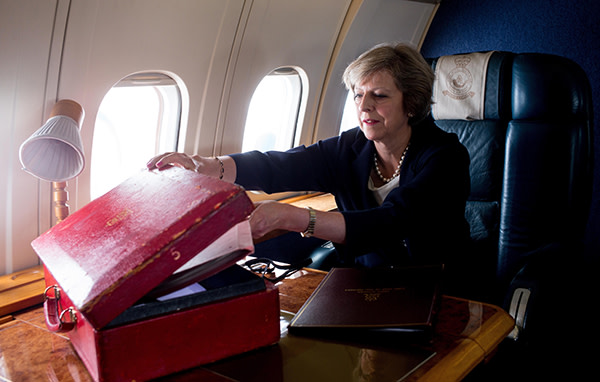
“It shouldn’t work on paper,” says James Cleverly, a rising star of the Tory party. “She didn’t have a power base or a pool of people fighting her corner in the team room. But when Cameron quit, a lot of us just said: ‘Yeah. She’d be good at it. She’s the one.’”
Another Tory MP said: “She is easy to admire but harder to like. Lots of Conservative MPs don’t really feel they know her. What you are seeing now is the admiration for her that Tory MPs get on the doorstep from voters being reflected back on her at Westminster.” That could, of course, change quickly if the public mood alters or if parliamentary defeats over Brexit start to sap her authority. The pro-EU Liberal Democrats’ Richmond Park by-election victory last week cut her majority to 13.
May admits she is not the sort of politician who goes schmoozing in the Commons bars. Small talk with her often ends up with conversation halting abruptly, hanging awkwardly in thin air. A former Cameron aide says: “There’s no warmth or engagement. She doesn’t have any political capital to burn.”
It has been suggested that middle-aged male Tory MPs may be in thrall to May in the same way as some used to lust over Margaret Thatcher. Sarah Sands, London Evening Standard editor, suggested there was something emblematic about May’s penchant for £1,000 Amanda Wakeley leather trousers. “There is a mildly dominatrix style to the prime minister’s centrally controlled leadership,” she wrote. “It is she who wears the trousers indeed.”
But one cabinet minister says: “The parliamentary party has changed a bit from the days of Thatcher worship, when it was made up of people who were sent away from home at the age of seven and had a nanny fixation.”
For her part, May enjoys repartee with male Tory MPs. One, Richard Bacon, bemoaned the plight of “fat, middle-aged males” at Commons question time, only for the prime minister to invite him to “come up and see me some time”. Does she flirt with her colleagues? “Oh, perish the thought,” May smiles. Then she reveals: “I saw him yesterday. He said he had tried to lose a little weight.”
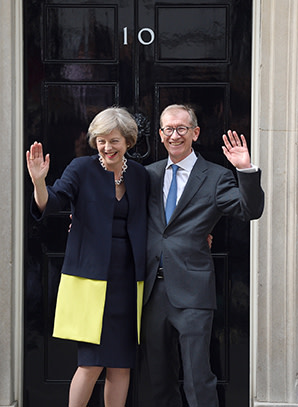
Donald Trump suggested in his first phone call to May that they might replicate the Reagan-Thatcher double act of the 1980s, but the prime minister tells aides she dislikes “lazy” Thatcher comparisons. “My first conversation with him was a good one and I think he values the special relationship,” she says. “But I’ve never thought of myself like anybody else, or as doing the job like anybody else.”
May was recently accused by the former Labour deputy leader Harriet Harman of being “no sister” on women’s rights, accusing her of voting for Tory cuts to support for working mothers. The comment outraged the prime minister’s friends.
Catherine Meyer points out that May is “passionate on children’s issues, matters affecting women, modern slavery”; a generation of Tory women MPs say May’s work with the Women2Win support group helped them reach Westminster.
Meyer says: “She’s a normal woman. You can see that girlishness in the way she dresses. She likes clothes. She can have a good laugh. But she doesn’t need people to like her. That’s a great advantage. She is not out there to please; she is basically a serious person.”
May accepts that she comes under additional scrutiny as a female politician: the Daily Mail is among many papers to devote pages to her dress sense, not least her passion for shoes. Does she mind? “Well, it’s OK when people say nice things,” she smiles.
The prime minister also seems to recognise that the way she dresses is a relatively safe way of letting the public look behind her façade. “Do I worry about people focusing on what I wear? No,” she says. “There’s a story that might illustrate why. A few years ago I got into a lift in the House of Commons with a young woman who happened to be wearing a nice pair of shoes and I said: ‘Oh, nice shoes.’ And she said she liked my shoes as well. And then she looked at me and said: ‘Your shoes got me into politics.’”
She takes another sip from her cup of tea. “I didn’t get the whole story, but something that can make people feel that they can approach a politician, or that politicians are like them, not some different species, I think is very important.”
George Parker is the FT’s political editor. Lionel Barber is the FT’s editor.
Photographs: Justin Sutcliffe/Polaris; Getty; AFP; Andrew Parsons / i-Images; MOD Crown Copyright 2016
This article was amended on December 8 to reflect the fact that Philip May is a client relationship manager, not an investment banker
Comments